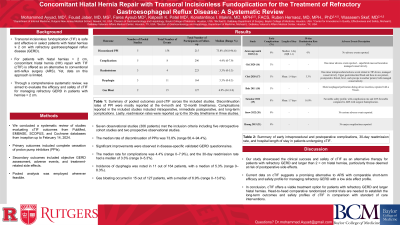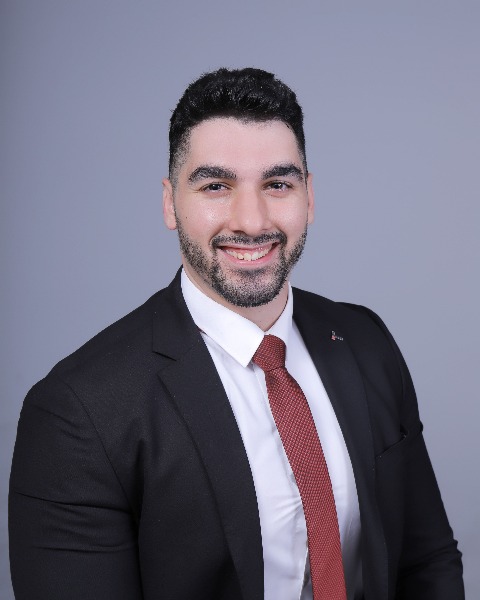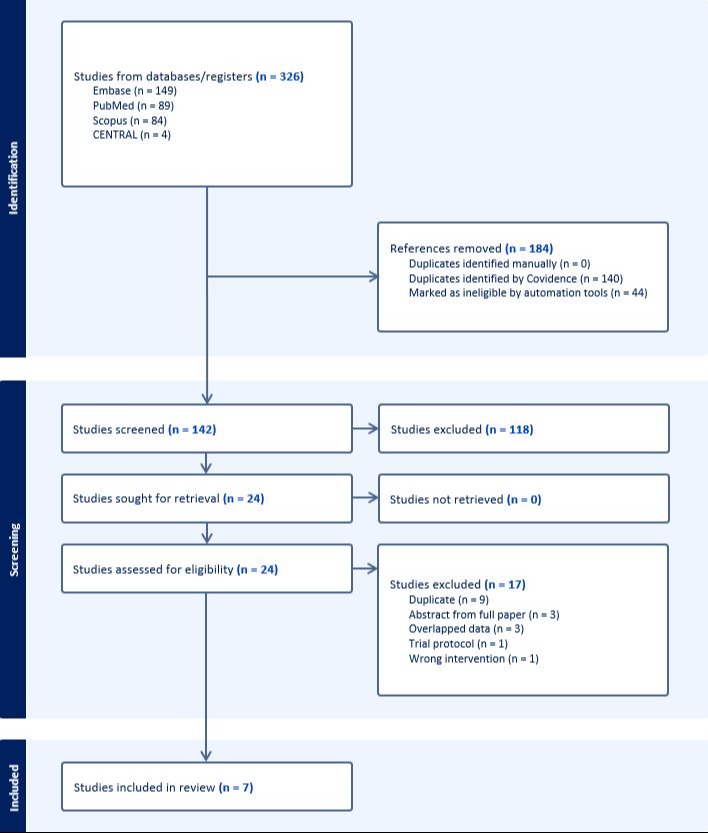Monday Poster Session
Category: Interventional Endoscopy
P2747 - Concomitant Hiatal Hernia Repair With Transoral Incisionless Fundoplication for the Treatment of Refractory Gastroesophageal Reflux Disease: A Systematic Review
Monday, October 28, 2024
10:30 AM - 4:00 PM ET
Location: Exhibit Hall E

Has Audio

Mohammed Ayyad, MD
Rutgers New Jersey Medical School
Newark, NJ
Presenting Author(s)
Mohammed Ayyad, MD1, Fouad Jaber, MD, MS2, Fares Ayoub, MD3, Kalpesh K. Patel, MD3, Konstantinos I. Makris, MD, MPH3, Ruben Hernaez, MD, MPH, PhD3, Wasseem Skef, MD3
1Rutgers New Jersey Medical School, Newark, NJ; 2University of Missouri - Kansas City School of Medicine, Kansas City, MO; 3Baylor College of Medicine, Houston, TX
Introduction: Transoral incisionless fundoplication (TIF) is a safe and effective treatment for select patients with hiatal hernias ≤ 2 cm and refractory gastroesophageal reflux disease (GERD). For patients with hiatal hernias > 2 cm, concomitant hiatal hernia (HH) repair with TIF (cTIF) is offered as an alternative to conventional anti-reflux surgery (ARS). However, data on cTIF are limited. This systematic review aims to evaluate the efficacy and safety of cTIF for managing refractory GERD in patients with hernias > 2 cm.
Methods: A systematic review was conducted using PubMed, EMBASE, SCOPUS, and Cochrane databases up to February 14, 2024. Studies evaluating cTIF outcomes were included. Primary outcomes assessed included the complete cessation of proton pump inhibitors (PPIs). Secondary outcomes included objective GERD assessment, adverse events, and treatment-related side effects. A pooled analysis was employed where feasible.
Results: Seven observational studies (306 patients) met the inclusion criteria, comprising five retrospective cohort studies and two prospective observational studies. The median rate of PPI discontinuation was 73.8% (range: 56.4% - 94.4%). Significant improvements were observed in disease-specific, validated GERD questionnaires. The median rate of complications was 4.4% (range: 0% - 7.9%), and the 30-day readmission rate had a median of 3.3% (range: 0% - 5.3%). The incidence of dysphagia was 5.3% (11 out of 164 patients; range: 0% - 8.3%), and the incidence of gas bloating was 6.9% (15 out of 127 patients; range: 0% - 13.8%).
Discussion: Current data on cTIF suggest it is a promising alternative to ARS with comparable short-term efficacy and a favorable safety profile for managing refractory GERD. However, longer-term data and comparative efficacy studies are needed to further validate these findings.

Note: The table for this abstract can be viewed in the ePoster Gallery section of the ACG 2024 ePoster Site or in The American Journal of Gastroenterology's abstract supplement issue, both of which will be available starting October 27, 2024.
Disclosures:
Mohammed Ayyad, MD1, Fouad Jaber, MD, MS2, Fares Ayoub, MD3, Kalpesh K. Patel, MD3, Konstantinos I. Makris, MD, MPH3, Ruben Hernaez, MD, MPH, PhD3, Wasseem Skef, MD3. P2747 - Concomitant Hiatal Hernia Repair With Transoral Incisionless Fundoplication for the Treatment of Refractory Gastroesophageal Reflux Disease: A Systematic Review, ACG 2024 Annual Scientific Meeting Abstracts. Philadelphia, PA: American College of Gastroenterology.
1Rutgers New Jersey Medical School, Newark, NJ; 2University of Missouri - Kansas City School of Medicine, Kansas City, MO; 3Baylor College of Medicine, Houston, TX
Introduction: Transoral incisionless fundoplication (TIF) is a safe and effective treatment for select patients with hiatal hernias ≤ 2 cm and refractory gastroesophageal reflux disease (GERD). For patients with hiatal hernias > 2 cm, concomitant hiatal hernia (HH) repair with TIF (cTIF) is offered as an alternative to conventional anti-reflux surgery (ARS). However, data on cTIF are limited. This systematic review aims to evaluate the efficacy and safety of cTIF for managing refractory GERD in patients with hernias > 2 cm.
Methods: A systematic review was conducted using PubMed, EMBASE, SCOPUS, and Cochrane databases up to February 14, 2024. Studies evaluating cTIF outcomes were included. Primary outcomes assessed included the complete cessation of proton pump inhibitors (PPIs). Secondary outcomes included objective GERD assessment, adverse events, and treatment-related side effects. A pooled analysis was employed where feasible.
Results: Seven observational studies (306 patients) met the inclusion criteria, comprising five retrospective cohort studies and two prospective observational studies. The median rate of PPI discontinuation was 73.8% (range: 56.4% - 94.4%). Significant improvements were observed in disease-specific, validated GERD questionnaires. The median rate of complications was 4.4% (range: 0% - 7.9%), and the 30-day readmission rate had a median of 3.3% (range: 0% - 5.3%). The incidence of dysphagia was 5.3% (11 out of 164 patients; range: 0% - 8.3%), and the incidence of gas bloating was 6.9% (15 out of 127 patients; range: 0% - 13.8%).
Discussion: Current data on cTIF suggest it is a promising alternative to ARS with comparable short-term efficacy and a favorable safety profile for managing refractory GERD. However, longer-term data and comparative efficacy studies are needed to further validate these findings.

Figure: PRISMA chart for screening process.
Note: The table for this abstract can be viewed in the ePoster Gallery section of the ACG 2024 ePoster Site or in The American Journal of Gastroenterology's abstract supplement issue, both of which will be available starting October 27, 2024.
Disclosures:
Mohammed Ayyad indicated no relevant financial relationships.
Fouad Jaber indicated no relevant financial relationships.
Fares Ayoub indicated no relevant financial relationships.
Kalpesh K. Patel indicated no relevant financial relationships.
Konstantinos Makris indicated no relevant financial relationships.
Ruben Hernaez indicated no relevant financial relationships.
Wasseem Skef indicated no relevant financial relationships.
Mohammed Ayyad, MD1, Fouad Jaber, MD, MS2, Fares Ayoub, MD3, Kalpesh K. Patel, MD3, Konstantinos I. Makris, MD, MPH3, Ruben Hernaez, MD, MPH, PhD3, Wasseem Skef, MD3. P2747 - Concomitant Hiatal Hernia Repair With Transoral Incisionless Fundoplication for the Treatment of Refractory Gastroesophageal Reflux Disease: A Systematic Review, ACG 2024 Annual Scientific Meeting Abstracts. Philadelphia, PA: American College of Gastroenterology.
